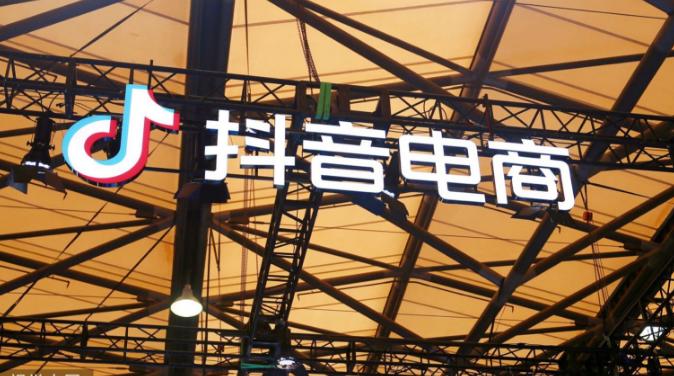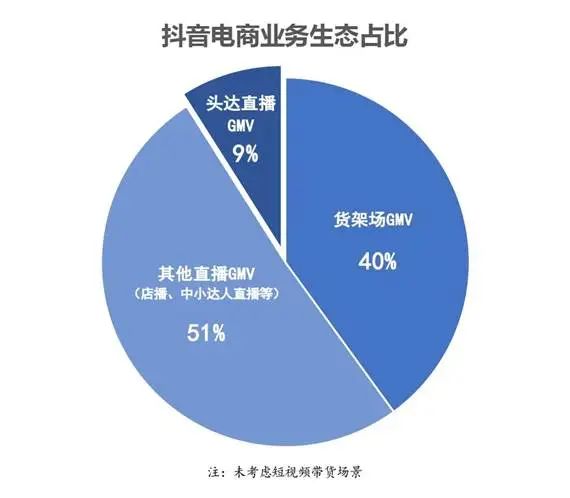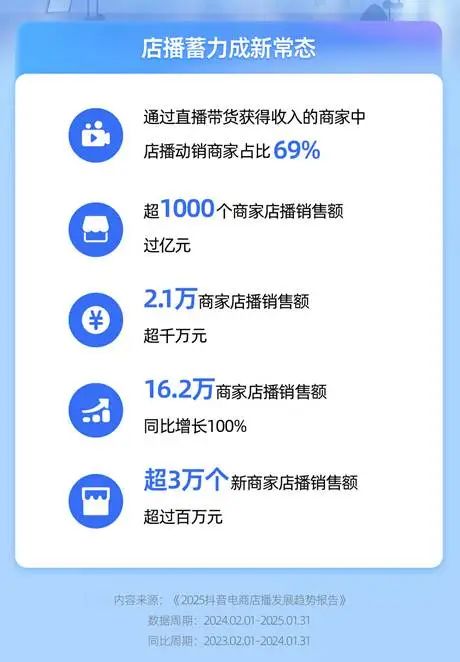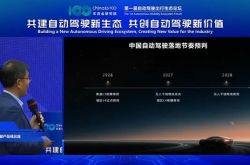The Shifting Winds of Douyin E-commerce in 2025
![]() 03/03 2025
03/03 2025
![]() 585
585

A keen observer will not miss the notable changes occurring within the e-commerce sector, particularly in Douyin E-commerce, amidst the dazzling advancements in the technology industry this year.
Since the turn of the year, the policies directed towards merchants on Douyin E-commerce have undergone subtle yet significant shifts, indicating a transformation in the platform's strategic direction.
On January 6, Douyin E-commerce unveiled nine supportive policies aimed at aiding merchants in reducing costs and boosting profits. These measures encompass lower costs, enhanced efficiency, and superior resources, fostering a healthier and more dynamic business environment.
The specifics of these policies include commission exemptions, promotional fee refunds, upgraded traffic mechanisms, reduced return rates, and shipping insurance, among others. These nine policies collectively demonstrate a comprehensive commitment to supporting and alleviating the burdens of Douyin E-commerce merchants.
01 A More Inclusive Growth Strategy
Upon closer inspection, these inclusive policies direct the platform's attention and resources towards higher-quality merchants, aligning with Douyin E-commerce's developmental trajectory over the past few years:
Over time, Douyin E-commerce has significantly reduced its reliance on live streaming, particularly by top influencers, instead focusing more on store live and shelf scenarios.
Data previously reported by 36kr underscores this shift:
In 2024, shelf scenarios accounted for over 40% of GMV on Douyin E-commerce, while store live accounted for slightly more than 30%. The remaining 30% primarily came from influencer live streaming, with top influencers contributing approximately 30% and small-to-medium influencers contributing 70%. Specifically, influencers with over one million followers contributed only about 9%, while small-to-medium influencers contributed about 21%.

Source: 36kr, Proportion of Douyin E-commerce Business Ecosystem
While influencer live streaming remains significant, the shift in focus towards small-to-medium influencers has generated value surpassing that of top influencers. As top influencers' prominence diminishes, store live emerges as the backbone, fostering a healthier and more dynamic platform environment.
The rationale behind this shift is straightforward:
With the evolution of live streaming e-commerce, store live by merchants has gained increasing prominence. 36kr posits that Douyin E-commerce allocates more resources to brand and non-brand merchants to achieve larger GMV, aligning with the platform's underlying logic of pursuing high-quality growth and incremental value since the second half of last year.
Looking back, many can discern the details of this logical transition:
Since 2022, when Douyin E-commerce emphasized interest-based e-commerce across all scenarios, its supportive impact on merchants has gradually materialized:
The introduction of the Douyin Mall tab drove the proportion of GMV from shelf scenarios to 30% in 2023. Subsequently, with the launch of an independent app, shelf scenario GMV climbed to 40% in 2024. Compared to live streaming, shelf scenarios are more aligned with users' active searching and purchasing behaviors.
For two consecutive years, the GMV generated by store live on Douyin E-commerce has surpassed that of influencer live streaming, as brand merchants prioritize live streaming on their official flagship stores, and small-to-medium merchants increase their broadcast frequency to bypass intermediaries.
Data from Douyin E-commerce also confirms the growing trend of store live. Among small-to-medium merchants with GMV exceeding 1 million yuan in 2024, over 90,000 achieved this through store live, outpacing influencer live streaming.
02 The Core Logic of Store Live Supporting the Platform
It is evident that the ascendancy of store live is not only the industry trend but also crucial for the platform to cultivate a healthy ecosystem. This shift underscores the evolving strategy of Douyin E-commerce:
In the new year, Douyin E-commerce will prioritize the development of store live, aiming to support merchants growing on the platform, further reducing their burdens, and increasing their revenue.
At the "New Normal of Store Live, New Growth of Business" open day event held by Douyin E-commerce on February 25, 2025, the "2025 Douyin E-commerce Store Live Development Trend Report" released on-site provided substantial data supporting this strategy:
For instance, the current proportion of store live on Douyin E-commerce significantly impacts overall and activity-level GMV:
From February 2024 to January 2025, among merchants earning income through live streaming, 69% were actively engaged in store live sales. Over 1,000 merchants achieved sales exceeding 100 million yuan through store live, and 21,000 merchants surpassed 10 million yuan. The number of brand merchants initiating store live on the platform increased by 113% year-on-year.

Another example is the positive feedback from agricultural merchants on the platform:
Agricultural product merchants promote rural development through store live. The number of agricultural product merchants earning income through store live increased by 172% year-on-year, with over 10,000 achieving sales exceeding 1 million yuan.
Moreover, merchants in industrial belts have also achieved new growth through store live:
Nationwide, store live sales in industrial belts surpassed 430 billion yuan, and the number of industrial belt merchants with increased income from store live rose by 52% year-on-year. Book publishing merchants promoted cultural consumption through store live, with the number of book merchants achieving sales exceeding 10 million yuan increasing by 38% year-on-year.
03 Cultivating a More Win-Win Ecosystem
The healthy development of merchants is inseparable from platform support.
From the merchants' perspective:
With the resources and support from e-commerce platforms, more industry practitioners and workers engage in channel sales and product design. Consumer needs are fed back to producers through live streaming rooms, leading to the reverse customization of products that better meet consumer demands. This makes content creation in live streaming rooms a vital link in enhancing industrial value.
Ju Quanzhi, the founder of "Nongxin Nongyi," exemplifies this value chain extension:
Ju Quanzhi joined Douyin in 2018 and began selling sweet potatoes through store live in 2020. From selecting sweet potatoes among Yantai's specialty products (seafood, sweet potatoes, and apples) to presenting them authentically (picking and roasting without filters or scripts) and adjusting based on market feedback (reinforcing shipping boxes), the sweet potato industry in Yantai emerged from a low-value-added dilemma. As platform orders surged, Ju Quanzhi transitioned to more order-based planting:
He began booking with high-quality farmers at market prices, providing seedlings developed by the Yantai Academy of Agricultural Sciences, and deducting seedling costs post-purchase. This eliminated farmers' sales concerns, allowing them to focus on planting. Simultaneously, they managed the booked sweet potatoes professionally, sending technicians to teach farmers scientific planting methods.
This case demonstrates how the extended value chain has increased awareness and purchases of Yantai sweet potatoes.
From the consumers' perspective:
Store live offers a clearer and more diverse display of brand stories and an in-depth introduction of product features, making it easier for consumers to comprehend brand narratives and product details, thereby facilitating needs-based purchases.
This point is also supported by French sociologist Pierre Bourdieu's discussion on the "consumer world."
In Bourdieu's view, amidst society's abundant material resources, users' consumption behavior transcends mere "need" and emphasizes the "meaning" inherent in products, i.e., "why I buy." Often, this "why" is conveyed through "content."
Clearly, the content creation process in store live aligns closely with consumers' content consumption needs, fostering exploratory purchasing behaviors. This is also why Douyin E-commerce is committed to investing in store live merchants and reducing their burdens:
Consumer needs are being shaped through the store live channel on Douyin E-commerce.
Finally, from the platform's perspective, Douyin E-commerce's investment in store live transcends commercial value, encompassing social value as well:
The case of Douyin E-commerce merchant "Yuanmuxuan" revitalizing the local wooden comb industry in Anhui is illustrative. One detail is particularly thought-provoking: By launching the wooden comb industry, farmers working in comb factories during slack seasons earned approximately 5,000 yuan monthly, enabling more locals to find nearby employment.
04 Conclusion
Data from Douyin E-commerce reveals that over the past year, 69% of merchants earning income through live streaming achieved active sales through store live, with over 1,000 merchants surpassing 100 million yuan in sales. Clearly, store live by merchants has become the mainstream in live streaming. Looking back at Douyin E-commerce's nine supportive measures launched at the beginning of the year, reducing costs and increasing income for merchants stands out as a prominent policy "ace" played by the platform.
This year, the winds of change are blowing softly yet powerfully through Douyin E-commerce.






